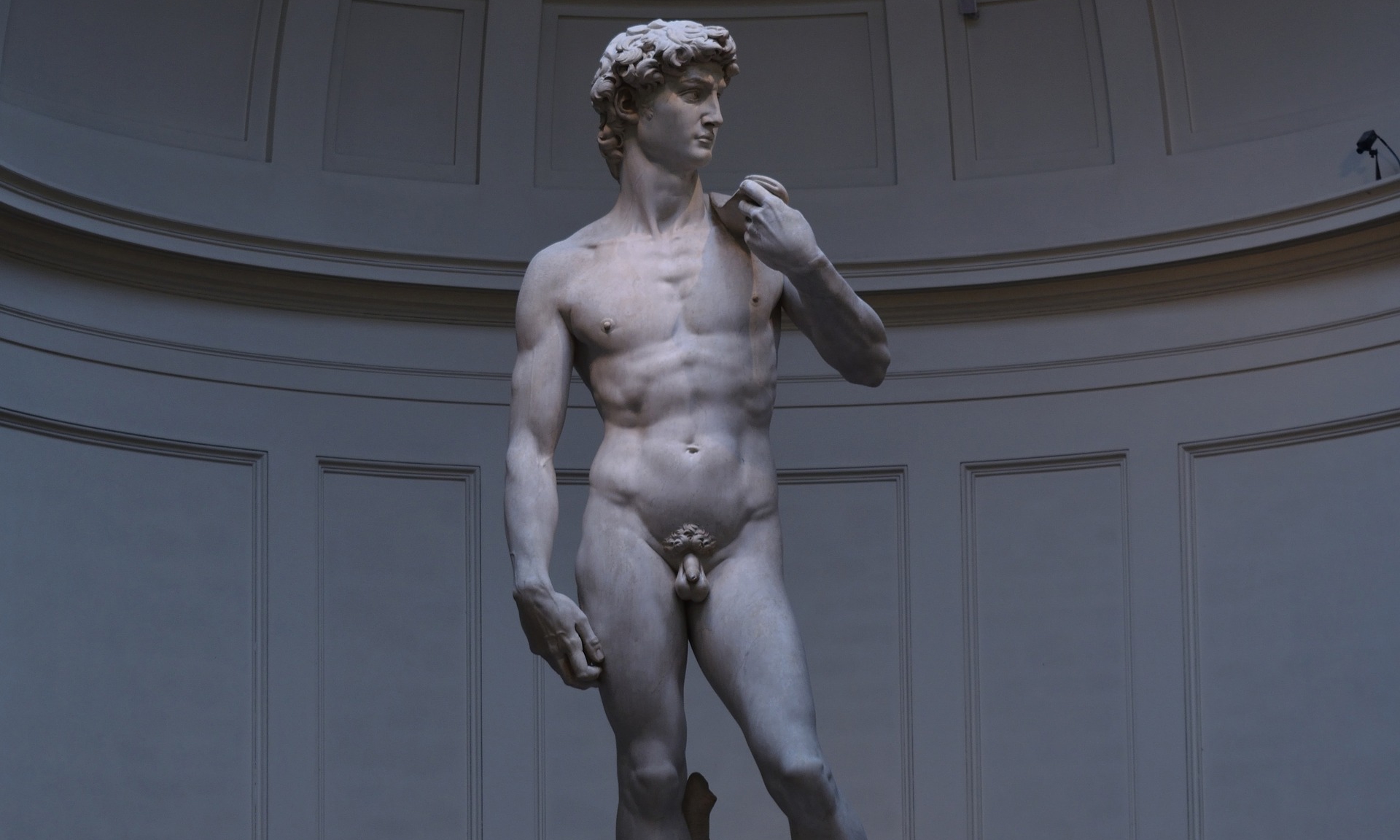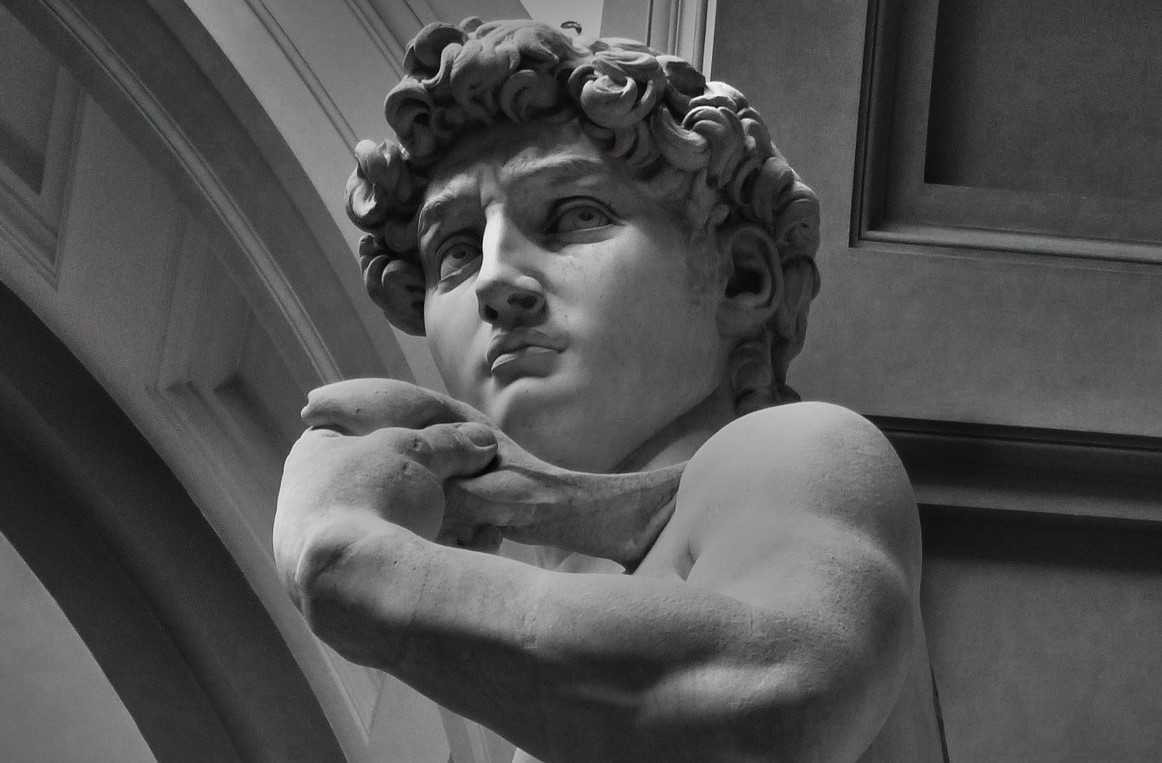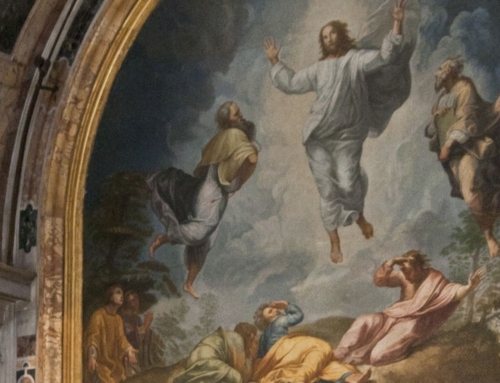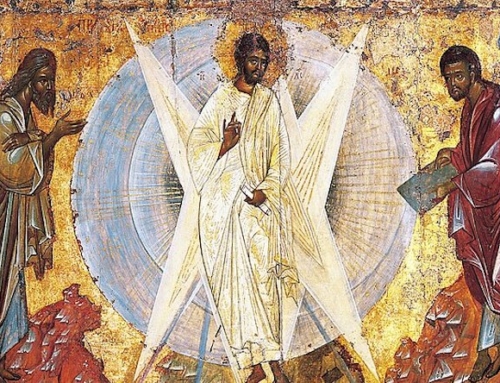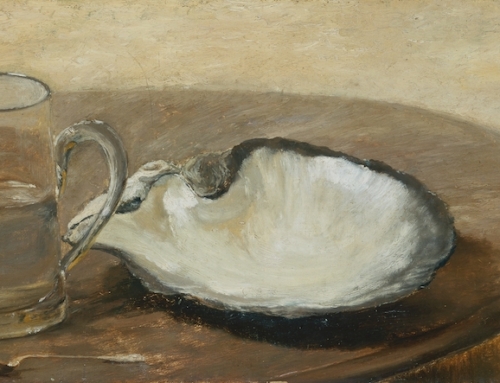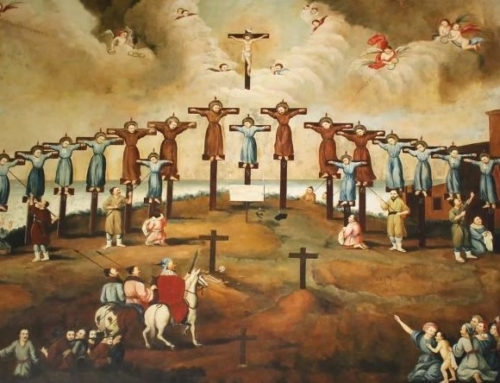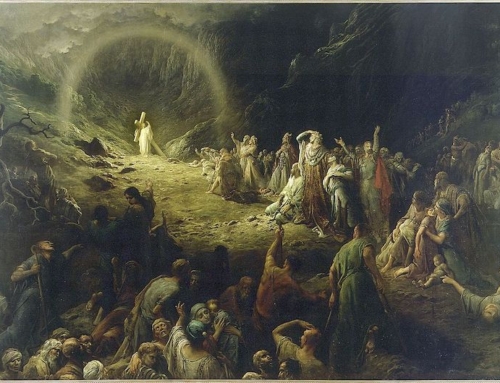Editor’s note: This is the seventh post in our newest series, Beholding True Beauty, which consists of prayerful reflections on works of sacred art. The series will run on Tuesdays and Thursdays throughout the month of October. Read the whole series here.
Michelangelo’s David is arguably one of the most famous pieces of art ever created. Anyone can recognize the statue, even if only because they once saw a copy of it in an Italian restaurant. Many people have grown indifferent to the statue because of its popularity and how commonplace it has become. However, as I sat in the Accademia Gallery in Florence beholding Michelangelo’s masterpiece for myself, the only possible response was one of wonder and awe. Michelangelo invites you to enter into the drama of the historical David and everything it represents: radical dependence on God in the face of seemingly insurmountable obstacles. The David radiates the timeless beauty of human perfection found in God, which resonates deeply in the heart of man. As I stood in wonder before the David, I felt taken out of the ordinary and the growing desire for excellence.
Michelangelo is unique in his portrayal of David. He is the first to show him, not in the moment of slaying the giant or victoriously holding his head, but in the moments immediately before. He stands not yet victorious, but prepared for the fight. Michelangelo highlights this by placing David in the contrapposto position, with the weight of the body on the right leg, giving the impression of movement. He has prepared in the most unreasonable way possible: “Then Saul clothed David with his armor … David said to Saul, ‘I cannot go with these; for I am not used to them.’ And David put them off” (1 Sam 17:39).
David has stripped himself of all earthly protection and human comfort, remaining exposed and vulnerable to the dangers of battle. Even the sling seems to disappear over his shoulder, and one can only suppose that there are stones in his right hand. David does not put his hope in these mere tools. Yet, while appearing so weak, David gives the impression of strength, and, because of this, a certain radiance and beauty. His gaze, as he stares down the enemy, is not one of fear, but total trust. This is the face of one who has surrendered everything to the Lord God. This is the image of man fully alive.
This is the moment immortalized for all time by Michelangelo, who invites peoples of all times and places to enter into this drama in their own lives. David gives himself completely to the Lord. How much more true is this for us living in the eternal and everlasting covenant of Jesus Christ, united to Him in baptism? Human excellence is found in the radical dependence upon God, who not only gives us our very existence and identity as human persons, but calls us each by name to discipleship. Inasmuch as we desire to be better and more fully alive, we desire to strip ourselves of everything that is not Christ, presenting to the Lord our very selves in our vulnerability and weakness. This is where true beauty and human excellence is found: in the giving of ourselves to the transforming power of Lord without reservation, allowing him to make of us a new creation.
In the Enneads, the ancient philosopher Plotinus writes that we, in our own lives, should be like sculptors making a statue beautiful: “Remove what is superfluous, straighten what is crooked, clean up what is dark and make it bright, and never stop sculpting your own statue, until the godlike splendor of virtue shines forth to you.” By the grace of God, baptized Christians should strip themselves of all that is not holy and present themselves to God in their weak and imperfect humanity. They should give themselves to him, that he will fill them with his strength. God, the Master Sculptor, can then carve within man the perfect image of Jesus Christ. Then, like David and with Christ, they can look upon the battlefield and, through his grace, slay giants.
✠
Photo of David by Michelangelo

